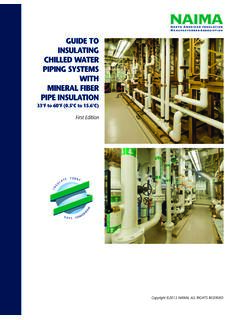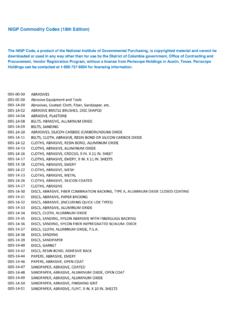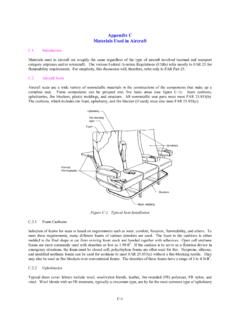Transcription of Forensics Fiber Analysis - Weebly
1 Fiber Analysis Fibers Individual or Class Evidence? Class Even if fibers from two separate places can be matched via comparison, that does not mean they derive from the same source Direct Transfer: from victim to suspect or from suspect to victim Ex. from suspect's sweater to victim Secondary Transfer: when fibers are transferred from an original source to one person and then to a second person. Ex. Carpet (fibers) Victim Victim Suspect Ex. Pet (fur) Suspect Suspect Victim Fibers are Time-Sensitive! Within 24 hours, 95% of all fibers have been lost from a crime scene. What Questions Do forensic Scientists Ask Come up with at least 5. Questions! about Fibers? 1) What is its composition? 2) What is its color? 3) Is it common or rare? 4) How many fibers were found? 5) Where were the fibers found? 6) What type of textile did the Fiber originate from?
2 (carpet, clothing, upholstery, etc.). 7) How many different types of fibers were transferred? The more sources of fibers, the longer or more violent the contact. 8) What type of crime was committed and does the amount of Fiber transferred match with what would be expected given the type and duration of contact? 9) How much time has passed between the crime and the discovery of Fiber ? How is Fiber Collected? Vacuums Sticky Tape Forceps With very accurate record of where fibers were found. How is Fiber Analyzed? It depends on if you have large or small quantities of fibers. Small Quantities (methods that do not destroy fibers): 1. Polarizing light microscopy 2. Infrared Microscopy Large Quantities (destructive analytic techniques): 1. Burning in flame 2. Dissolving in various liquids Textiles Textiles: clothing, carpet, upholstery.
3 Made by weaving together yarns. Yarns: made up of fibers that have been spun together. 2 Types of Fibers: 1) Natural: come from animals, plants, and minerals 2) Synthetic (man-made): regenerated Check your neighbor's fibers & polymers labels! 50% of fabrics made today are synthetic (man-made). Natural Fibers 1) Animal Fibers Made of proteins. Used in clothing, carpets, curtains, bedding. Obtained from hair, webbing, or fur: Hair wool (sheep), cashmere and mohair (goats), angora (rabbits). Usually loosely spun, making textiles that shed easily. Webbing Silk (caterpillar cocoons). Triangular structure gives silk its shiny appearance (works like a prism). Silk fibers are very long, tend not to shed easily Fur not considered a textile , used for coats and gloves Natural Fibers 2) Plant Fibers Can come from the seeds, fruits, stems, and leaves.
4 Made of cellulose (a polymer made of glucose monomers). NOT made of protein easy to distinguish from animal fibers Can absorb water but is insoluble (will not dissolve) in water. Can only be dissolved by a very strong acid (sulfuric acid). Very resistant to damage. Often short fibers (2-5 cm) that become brittle over time. Characteristics vary from thick and stiff to smooth, fine and flexible Some are amorphous have a loose arrangement of fibers that makes them soft, elastic, and absorbent. Natural Fibers Types of Plant Fibers 1) Seed fibers Cotton (found in seedpod). 2) Fruit fibers Coir coarse Fiber obtained from the covering of coconuts. Stronger than flax or cotton. 3) Stem Fibers not individual fibers, found in bundles Flax highly crystalline, dense strong fibers that resist rot and damage, used to make linen Jute coarse; used to make rope, mats, handbags Hemp similar to flax, used in Asia for clothing 4) Leaf fibers Manila extracted from the leaves of abaca (relative of banana tree).
5 Sisal desert plant; used for rope, netting, green garden twine, twine on hay bales; quick deterioration Natural Fibers 3) Mineral Fibers neither protein, nor cellulose Fiberglass short, weak, brittle glass fibers, used as insulation, easily sticks to skin (causing rash). Asbestos very durable; used in pipe coverings, ceiling tiles, fire-resistant work clothes, insulation Synthetic Fibers Synthetic = man-made in a lab Monomers put together to form polymers 1) Regenerated Fibers Derived from cellulose (plant origin). Examples: Rayon (smooth & silky) most common regenerated Fiber ;. made from processed cellulose; oldest (1880s - France). Cellulose + Acetate Celanese (used in carpets). 1 Cellulose + 3 Acetate units Polyamide Nylon (a breathable lightweight material used in high-performance clothing). Synthetic Fibers 2) Synthetic Polymer Fibers Originate from petroleum products (non-cellulose based).
6 Many can be easily dyed. Examples: Polyester added to natural fibers to increase strength Nylon similar to polyester; but easily broken down by light and concentrated acid (polyester is resistant to these); first used as artificial silk in pantyhose Acrylic artificial wool; clothing tends to pill easily;. inexpensive Olefins high performance clothing (thermal socks) and carpet; quick drying; resistant to wear Synthetic vs. Natural Synthetic fibers: Are stronger than natural fibers. Are not damaged by microorganisms. Are often cheaper than natural fibers. Can deteriorate in bright Polyester Cotton sunlight & melt at lower temperatures. Have very regular diameters under magnification. Yarns Fibers that are too short in their raw state can be spun together to make yarns. Rope is just a very big yarn. Characteristics that can be used to identify a type of yarn: Specific twist direction.
7 Blend of fibers (ex. wool and polyester) to give added strength or wrinkle resistance. Color (Dye Lot). Textiles Yarns are woven into textiles or fabrics. Weaving originated with basket-making. Stone Age man used flax fibers to weave linen. Bronze Age wool fabrics Oldest Loom Egyptian tomb 4400 Warp (lengthwise) and weft (over-under). Thread Count number of threads packed together Ex. Bed sheets Highest Cost Textiles - all natural fibers and high thread count (ex. 500 threads per inch). Weave Patterns - pattern of the warp and weft (the lengthwise and crosswise threads). 1) Tabby (plain). Over 1, under 1. (1/1 weave). Simplest, most common. (cont'd). 2) Twill (used in jeans). Over 2, under 1 (2/1 weave). Creates diagonal texture on surface. Less wrinkly, more durable, shows dirt less than plain (tabby).
8 (cont'd). 3) Satin 3/1, 4/1, 5/1, 6/1 or more. Smooth and silky on one side, dull on the other. (con't). 4. Basket Weave Multiple horizontal and multiple vertical strands 5. Knit Courses and wales Lab - Fiber Burn Test Materials Obtain one Fiber at a time from the front of the room. Safety Keep all papers away from the flame. Hold Fiber with tweezers. Use the aluminum foil to place Fiber remains. Disposal Throw away used match, aluminum foil, & Fiber remains. Place everything else back into the basket. Watch Video (7 min). Lab Fiber Burn Test Analysis : For each type of Fiber , identify the characteristic(s) that would help you distinguish that type of Fiber from all the others.







